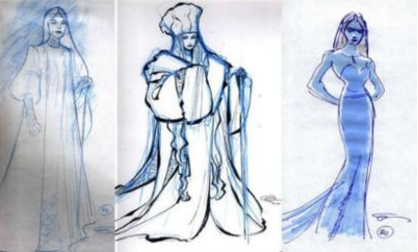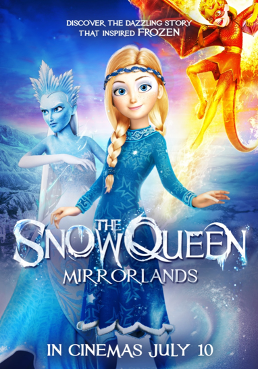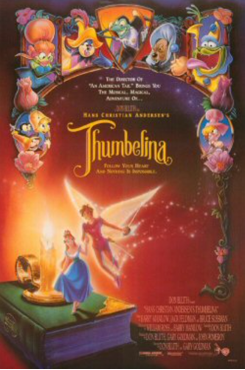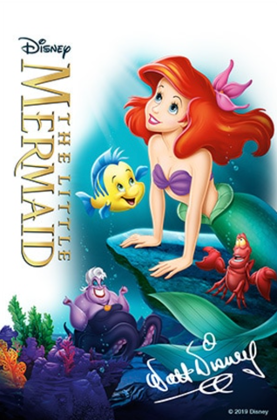Timeless Magic: The Snow Queen and other Fairytales
Written by Julia Luterman
Background
Hans Christian Andersen was a Danish author who made hefty contributions to the fairytale genre. In the mid 1800’s, he wrote many classics, such as The Little Mermaid, The Emperor’s New Clothes, The Princess and the Pea, of course, The Snow Queen.
A fairytale, as defined by the Merriam-Webster dictionary, is a story (as for children) involving fantastic forces and beings (such as fairies, wizards, and goblins). We grew up hearing these mystical tales, whether they were a folklore tale from hundreds of years ago, or a short mythical story with a moral to it, as to teach children a lesson. They have remained essential to popular culture after all this time, still rich in life lessons, yet digestible and enjoyable for all audiences.
Why Fairytales
As seen in the images below, fairy tales are not going ANYWHERE. These tales manage to outlive and survive modern times despite how much society and literature has shifted since their creation. This is because of the essential element to the standard fairytale, which is magic. Most stories, even outside of fairy tales, have the duality between good and evil that drives the plot. However, it is the mystical elements such as magical objects, talking animals, and imaginary realms that make real-life conflicts more understandable for children. And hey! Adults too. It allows us to face otherwise scary or confusing moral situations from a distance, in a way that is presentational, and of course, entertaining.
Let’s take the well-known story, The Little Mermaid. She was my personal favorite Disney Princess growing up, and I’m certainly not alone in loving her. More than 150 years after its initial release, there have been bunches of adaptations, with lots of pop culture influence. Shirley Temple played Ariel in an NBC special in 1958. Russia did their own version in the seventies that had the story take place in the 13th century. Disney, of course. There is even a statue of the mermaid sitting on a rock in Copenhagen Harbor in Denmark.
And now on to The Snow Queen. One of the interesting things about this fairytale is its specificity to the snow, and wintertime in general, which makes it extra popular during cold months and the holiday season. It has been referenced in an abundance of mediums. In 2014, The San Jose Repertory Theatre adapted it into a musical. It has inspired several different operas, including Snedronningen, which premiered at the Danish opera house in 2019. It was even referenced on the PlayStation game “Revelations: Persona”, where the Snow Queen’s mask from the original play is cursed and takes the user on an interactive journey of the story. However, the most famous adaptation would be Disney’s Frozen, which, in its early stages, was much closer to Hans Christian Andersen’s original fairytale.
Development for Disney’s adaptation of The Snow Queen began in the 1930’s, and the idea was first a biographical film about Hans Christian Andersen’s life. This was before even Snow White was produced. Later, the idea of incorporating his fairytales was implemented. The animated sequences would cover some of Andersen’s most well-known material, such as the Ugly Duckling, The Emperor’s New Clothes, and so on. It was passed on to Samuel Goldwyn, of
Goldwyn Studios and they produced Hans Christian Andersen, the film, which was mainly told through song and dance. It went on to win six academy awards. However, back at Disney, they were running into problems making The Snow Queen appeal to “modern audiences” as they were also focused on making wartime propaganda.
During the late nineties, Disney wanted to give it another try, and between then and until Frozen was released in 2013, there was trial and error in molding The Snow Queen into a modern adaptation. At one point it was going to be called “Anna and The Snow Queen”. Anna’s character was supposed to be based on Gerda, but it was later rewritten so Elsa would more closely resemble her, therefore creating a family dynamic that Disney deemed more interesting and easier for audiences to connect to. The name was changed from The Snow Queen to Frozen in light of Disney’s previous blockbuster, Tangled, as derived from Rapunzel.
"Hans Christian Andersen's original version of The Snow Queen is a pretty dark tale and it doesn't translate easily into a film. For us the breakthrough came when we tried to give really human qualities to the Snow Queen. When we decided to make the Snow Queen Elsa and our protagonist Anna sisters, that gave a way to relate to the characters in a way that conveyed what each was going through and that would relate for today's audiences. This film has a lot of complicated characters and complicated relationships in it. There are times when Elsa does villainous things but because you understand where it comes from, from this desire to defend herself, you can always relate to her. 'Inspired by' means exactly that. There is snow and there is ice and there is a Queen, but other than that, we depart from it quite a bit. We do try to bring scope and the scale that you would expect but do it in a way that we can understand the characters and relate to them."
– Producer Peter Del Vecho, on the difficulties adapting The Snow Queen
Although some of the plot has changed over time and varies a bit from adaptation to adaptation, the core message and theme of warming a cold heart remains. This is why it’s perfect for holiday time! This snowy, feel-good tale offers a message that all audiences, young or old, can get behind.
Media



